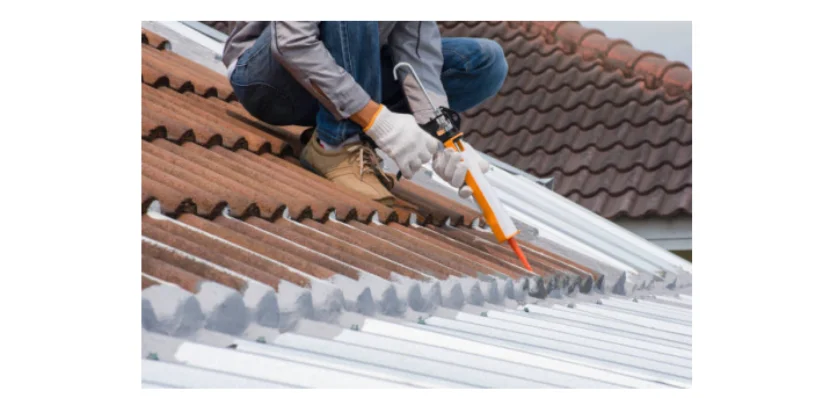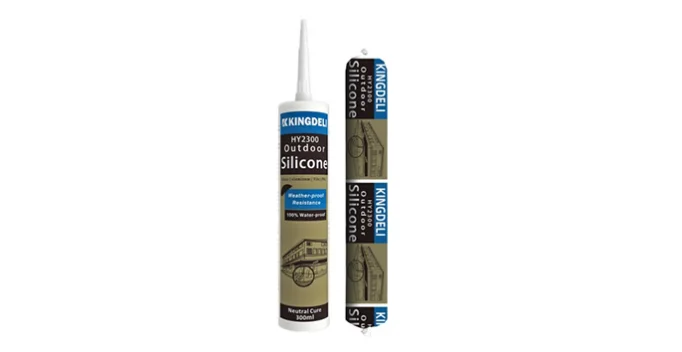Silicone vs MS Polymer: The Ultimate Sealant Guidance for Your Project

Understanding Silicone and MS Polymer Sealants
Key Features of Silicone Sealants
Silicone sealants are super popular because they’re stretchy, tough, and can handle really hot or cold weather. These glues come in one part and harden when they sit at room temperature. They make a strong, bendy bond. For example, neutral silicone sealants keep out rain and wind. They don’t give off much harmful gas and won’t rust things. They stick to lots of stuff like glass, aluminum, brick, concrete, and ceramic. Also, they work great in temperatures from -50°C to +200°C after they’ve set.
Another cool thing about silicone sealants is they don’t get damaged by sunlight or get old fast. This makes them awesome for jobs inside or outside. Take the HY-3300 Weatherproof Neutral Silicone Sealant, for instance. It’s made to fill cracks and gaps in building projects. It keeps water out and stays bendy.
Key Features of MS Polymer Adhesives
MS Polymer adhesives are a new kind of glue. They use a special tech called Modified Silane Polymer. This mixes the best parts of silicone and polyurethane glues. The HY-993 High Strength MS Polymer Adhesive/Sealant sticks really well, keeps out weather, and doesn’t sag. You can paint these glues, and they’re good for the planet with low harmful gas.
MS Polymer adhesives are great because they grab onto many surfaces without needing extra prep. They stick to glass, stainless steel, PVC, wood floors, aluminum, brick, concrete, ceramic tiles, and more. Plus, they dry fast on the outside but stay stretchy for a long time.
Differences in What They’re Made Of
Silicone sealants are built from silicon-based stuff. This gives them awesome stretch and heat resistance. But MS Polymer adhesives come from silane-modified polymers. These make them stick better and are kinder to the environment.
Silicone sealants are tops for handling heat and sunlight. However, they might not grab surfaces as fast as MS Polymer adhesives. On the other hand, MS Polymer adhesives are super strong at sticking to all kinds of materials without needing extra steps.
Applications of Silicone Roof Sealant and MS Polymer Adhesive
How Silicone Roof Sealant Helps in Building Projects
Silicone roof sealants are a must in construction. They’re amazing at stopping water leaks. People use them for roofs, curtain walls, doors, windows, granite surfaces, counter tops, sinks, shower glass, and bathroom areas. They can stand up to wild weather, so they’re perfect for outdoor jobs like sealing cracks or gaps in roofing.
For example, the HY-2300 Outdoor Neutral Silicone Sealant is great for filling joints in small curtain wall projects. It also seals around window frames to stop leaks. It doesn’t rust metals like aluminum or stainless steel. And it lasts a long time.

Why MS Polymer Adhesive Works in Many Industries
MS Polymer adhesives are super handy. They’re used in building, car making, boat work, and factory jobs. They stick strongly without needing primers, so they’re perfect for things like putting up door frames or gluing metal parts.
Take the HY-994 All Purpose MS Polymer Sealant. It’s good for waterproof sealing of PC panels in housing projects. It also joins aluminum alloy windows to concrete walls. Plus, it works on stuff like fiberglass or cultured marble because it stretches well and resists sunlight.
How They Perform Indoors and Outdoors
When you compare silicone roof sealants and MS Polymer adhesives outside, silicone sealants usually win. They handle sunlight and heat (up to +200°C) better. This makes them great for places with lots of sun or changing weather.
But MS Polymer adhesives are awesome indoors. They stick strongly in steady settings, like sealing baseboards or kitchen counters. Many MS Polymer products can handle sunlight for outdoor use. Still, they might not last as long as silicone sealants in super hot or sunny spots.
Both sealants do a solid job. Picking one depends on what your project needs, like weather or material types.
Advantages and Limitations of Silicone and MS Polymer Sealants
Why Silicone Roof Sealant Is Great
Silicone roof sealants are famous for keeping water out and standing up to tough weather. They’re used for roofs, curtain walls, doors, windows, granite surfaces, counter tops, sinks, shower glass, and bathroom areas. They work in crazy temperatures from -50°C to +200°C. This makes them super tough in all kinds of weather.
Another big win is their sunlight resistance. The HY-3300 Weatherproof Neutral Silicone Sealant, for example, keeps water out and stays bendy. It’s perfect for outdoor jobs like sealing cracks in roofing. These sealants don’t give off much harmful gas and won’t rust metals like aluminum or stainless steel.
Also, silicone roof sealants harden at room temperature. They make a strong, stretchy bond. This keeps them working well without cracking or breaking down from weather stress. They’re great for both home and business projects.
Why MS Polymer Adhesive Is Awesome for Many Jobs
MS Polymer adhesives are a big hit because they work in tons of ways and are eco-friendly. The HY-993 High Strength MS Polymer Adhesive/Sealant sticks strongly, keeps out weather, and doesn’t sag. You can paint these glues, and they give off low harmful gas, so they’re a green pick.
A top feature is their ability to stick to lots of surfaces without primers. They work on glass, stainless steel, PVC, wood floors, aluminum, brick, concrete, ceramic tiles, and more. This makes them perfect for building projects needing strong bonds.
Plus, MS Polymer adhesives dry fast on the surface but stay stretchy. The HY-994 All Purpose MS Polymer Sealant is great for waterproof sealing in housing projects. It also joins aluminum windows to concrete walls. Their special Modified Silane Polymer tech makes them last, even in tough spots.
Downsides to Think About for Both Sealants
Both silicone and MS Polymer sealants have lots of perks, but they’ve got some downsides too. Silicone sealants might not stick as strongly right away compared to MS Polymer adhesives. This can make them less good for jobs needing quick positioning or heavy gluing.
On the flip side, MS Polymer adhesives stick well but might not handle heat or sunlight as well as silicone sealants. Also, some MS Polymer adhesives need specific conditions to harden right.
Both sealants need you to apply them correctly to work well. If you mess up or don’t prep surfaces properly, they might not stick or last long.
Factors to Consider When Choosing Between Silicone and MS Polymer
How Weather Affects Sealant Performance
Weather is a big deal when picking a sealant. Silicone sealants can handle extreme temperatures (-50°C to +200°C) and sunlight super well. They’re awesome for outdoor jobs with lots of sun or changing weather. Their toughness means they last in rough conditions.
But MS Polymer adhesives are great indoors where things stay steady. They stick strongly, like for sealing baseboards or kitchen counters. Many MS Polymer products can handle sunlight for outdoor use. Still, they might not do as well as silicone sealants in long-term heat or sun.
How They Stick to Different Materials: Silicone vs. MS Polymer Adhesive
How well a sealant sticks to stuff is really important. Silicone sealants stick great to glass, aluminum, brick, concrete, ceramic tiles, granite, and more. Neutral silicone types don’t rust metals and stay bendy over time.
MS Polymer adhesives stick to even more things without needing primers. They work on plastics (PVC), wood floors, fiberglass, cultured marble, and more. Their ability to bond without extra prep makes them perfect for projects with lots of material types.
How Long They Last and Maintenance Needs
How long a sealant lasts is key when choosing between silicone and MS Polymer. Silicone roof sealants last a long time in tough spots because they resist sunlight and temperature changes. They don’t need much upkeep once you apply them right.
MS Polymer adhesives also last well but might need checks depending on where they’re used. Their paintable feature is cool because you can match colors while keeping them working over time.
FAQs
What’s different between silicone sealants and MS Polymer adhesives?
Silicone sealants are great for heat resistance (-50°C to +200°C) and sunlight protection. MS Polymer adhesives are awesome at sticking to lots of stuff without primers. They’re pain table and eco-friendly.
Can silicone roof sealants handle rough weather?
Yup! Silicone roof sealants like the HY-3300 Weatherproof Neutral Silicone Sealant are built for tough weather. They keep water out and stay bendy.
Are MS Polymer adhesives okay for outside?
Totally! Many MS Polymer products resist sunlight, so they’re fine for outdoor jobs with changing weather.
How do I pick the best sealant for my project?
Think about weather (sunlight or heat), what materials you’re using (glass, aluminum, or wood), how long it needs to last, and what the job needs.
For inquiries about customized solutions, Foshan Kingdeli Viscose CO., LTD offers tailored services. Contact us today!
